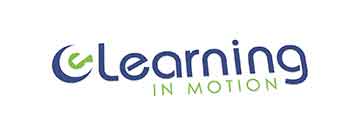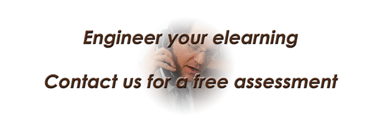Education is a vital pillar of human development and progress; humans need to learn in order to face the troubles of this world. Over the years, technology has played a significant role in revolutionizing various industries, and education is no exception. Although the industrial revolution formed schools the way we know them now to train workers for the factories, education has moved on to shape knowledge professionals more or less using the same pedagogies, in this way, schools have not changed that much since the industrial revolution.
Table of Contents
And so, a typical course consisted of a teacher delivering the content, with the help of a chalkboard, his voice, and maybe a textbook. Tests would measure student progress and feedback came in the form of a grade. A teacher would have a group of students, which made almost impossible any personal feedback, or even a personalized education (unless you were rich, then you had tutors). But now teachers can add content to their classes, which supports learning that helps students understand the class subject, this way objectives are fulfilled and later measured with tests or assignments.
eLearning Enters the Stage
But technology has improved the delivery methods of education, thanks in part to advances in computer sciences. Although, in my opinion, it is multimedia that has made a sizeable contribution to education. Long ago, movies, TV, radio, audio, and text webpages were used to deliver education, which fell into the category of multimedia. At the end, eLearning won the terminology wars, since the mode of delivery now is through electronic means. What has changed though, is how we are making eLearning courses these days.
eLearning software has made strides and now you can produce a whole eLearning course on your own PC and, depending on the complexity of the course, you can have a prototype one in a matter of hours. With the advent of eLearning software development, traditional educational methods are undergoing a profound transformation. This blog post explores how eLearning software development is shaping the future of education and revolutionizing the way we learn. It is important to note that you still need a teacher to build the course curriculum (now they are called subject matter experts, or instructors), many times developing an eLearning course using software still needs the input from a teacher to check that the delivered material supports learning.
How Software is Innovating eLearning
1. Accessibility and Flexibility in eLearning Courses
One of the most significant advantages of developing courses with eLearning software is the accessibility and flexibility it offers. Traditional education often relies on physical classrooms and fixed schedules, limiting the opportunities for many individuals to access education. However, with eLearning, anyone with an internet connection can access educational resources and courses from anywhere in the world, breaking down geographical barriers and providing equal opportunities for all.
Instructional designers and course developers can produce eLearning courses that have the required elements for accessibility: that means, you can view an eLearning course with any device: PC, laptop, mobile device, tablet, and so on. This has made mobile learning possible, microlearning came from this very technology. The software used to develop eLearning courses comes with features that allow testing for different devices, and the addition of elements that work for a particular technology (think course viewed across browsers).
eLearning software allows the development of courses with elements for navigation such that students can learn at their own pace. eLearning software can help designers develop courses that can create personalized learning paths (this is for courses that have clear scenarios, otherwise you would need artificial intelligence software for this). They can access educational materials, lectures, and assignments at their convenience, accommodating different learning styles and preferences. This flexibility empowers students to balance their education with other commitments such as work or family responsibilities, making education more accessible to a broader audience.
2. Interactive and Engaging eLearning Experience
One aspect that eLearning software changed for the development of courses was the introduction of interactive and engaging elements. This has the effect of improving the experience of learners in an eLearning course. Traditional methods often rely on passive learning, where students listen to lectures or read textbooks without much interaction. In contrast, eLearning software incorporates multimedia elements, such as videos, animations, simulations, and gamification techniques to make learning more interactive and enjoyable.
Through eLearning platforms, students can actively participate in their learning process. They can engage in discussions, collaborate with peers, and receive immediate feedback on their progress. This active involvement enhances knowledge retention and promotes critical thinking and problem-solving skills. Additionally, eLearning software often incorporates adaptive learning algorithms (in the most expensive solutions out there), which analyze individual student performance and provide personalized recommendations for further improvement.
eLearning requires interactive and engagement these days, it is rather expected that eLearning courses should contain some level of interactivity and engagement, many times through the use of multimedia and gamification (read about how to integrate gamification in eLearning). But there are other techniques and methodologies that I explain in a post on how to make engaging eLearning. Overall, the advancement of software for eLearning has made possible the design and production of engaging elements in a short period of time. The reason it was hard to make engaging eLearning courses was the cost and the time it took for production but these days these have reduced substantially.
3. Diverse eLearning Resources
eLearning software for course development has expanded the range of eLearning resources available to students. Traditional education heavily relies on textbooks and limited classroom materials. But I have to acknowledge that teachers are very creative, and they can produce resources to enhance the learning experience. Of course, there are limits to what they can create but we must recognize that it depends a lot on the teacher to make their classes a great experience for students. Many are already capable of using eLearning software to produce these materials for their classes.
eLearning platforms (aka learning management systems, or LMS) provide access to a vast array of digital resources, including e-books, online journals, research papers, and educational videos from renowned experts. In some cases, learners can create content that can serve as additional resources to their peers, and instructors can recycle that content as models for incoming students. These resources need not be text only: many LMS systems contain tools to create multimedia content as part of assignments or as resources for other students.
Moreover, eLearning software enables educators to create and share their own content, tailoring it to specific learning objectives and student needs. This empowerment of educators fosters creativity and innovation in the teaching process, enabling them to incorporate real-life examples, case studies, and interactive activities that enhance understanding and application of knowledge.
4. Data-Driven Insights
Another significant impact of eLearning software development is the generation of valuable data and analytics. Traditional education often lacks detailed insights into individual student progress and learning patterns. However, eLearning platforms collect data on student performance, engagement, and learning behaviors, providing educators with comprehensive information for effective assessment and personalized instruction. The use of data for decisions on how to improve eLearning courses is now a necessity more than a nice to have feature. For example, some tests may have proven difficult for students, you can only determine this by looking at the data from that test. You can determine the difficulty students had in navigating a course by looking at their clicks in a course. Video has data analytics as well, many systems collect data on engagement, time that students watched a video, and so on. This can help in improving video production towards techniques that actually work.
By analyzing this data, educators can identify areas where students are struggling and tailor their teaching approaches accordingly. They can track progress, identify trends, and make data-driven decisions to optimize the learning experience. I have a post where I point out that you need to plan how to collect the data and the measurements you need for later analysis, this involves the input from stakeholders, this will provide a broader input that can help make decisions on how to improve the course. Additionally, eLearning platforms facilitate the assessment process through automated grading and feedback systems, saving valuable time for educators and providing prompt feedback to students.
Conclusion
eLearning software development is shaping the future of education by revolutionizing the way we learn and teach. Its accessibility, flexibility, and interactive learning experience have made education more inclusive and engaging. The availability of diverse learning resources and personalized learning paths has empowered both students and educators to explore new horizons. Furthermore, data-driven insights enable educators to provide targeted support and continuously improve the learning experience.
As technology continues to advance, the potential for eLearning software development in education is boundless. The future holds exciting possibilities for virtual reality (VR), augmented reality (AR), and artificial intelligence (AI) integration in eLearning software, further enhancing the educational experience. VR and AR can transport students to virtual environments, providing immersive and interactive learning experiences. AI-powered algorithms can offer intelligent tutoring systems, adaptive learning platforms, and personalized recommendations tailored to individual student needs.
Moreover, the COVID-19 pandemic has accelerated the adoption of eLearning software, highlighting its significance in times of crisis. During periods of lockdowns and social distancing, eLearning platforms served as a lifeline for educational continuity. This experience has paved the way for a hybrid model of education that combines the best of traditional and online learning, ensuring resilience and flexibility in the face of unforeseen challenges.
However, it is important to acknowledge that eLearning software development also presents certain challenges. The digital divide and lack of access to technology and reliable internet connections remain barriers to equal educational opportunities. Efforts must be made to bridge this gap and ensure that everyone has access to quality eLearning resources.
Additionally, the human element of education should not be overlooked. While eLearning software provides numerous benefits, the role of skilled educators in guiding and mentoring students cannot be replaced. The successful integration of eLearning software into the education system requires a balance between technology and human interaction, fostering meaningful connections and support networks.
Finally, eLearning software development is reshaping the future of education by democratizing access to knowledge, promoting interactive and engaging learning experiences, and providing valuable data-driven insights. As technology continues to advance, the potential for innovation in eLearning is limitless. By embracing this transformative approach to education, we can foster a lifelong love for learning and prepare students for the challenges and opportunities of the future.
Thank you for reading this post. If you would like to receive exclusive content, use the form on this page to sign up to our mail list. Please, share this post. Like this post. Leave a comment below.


